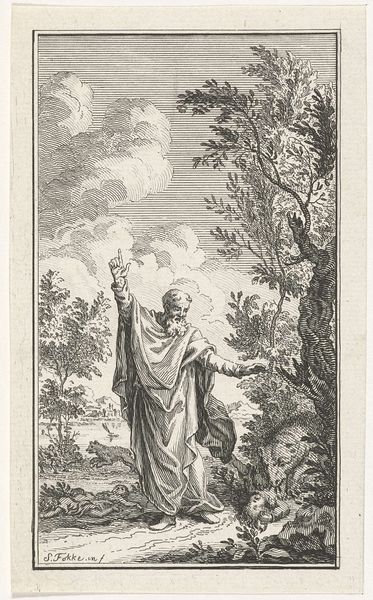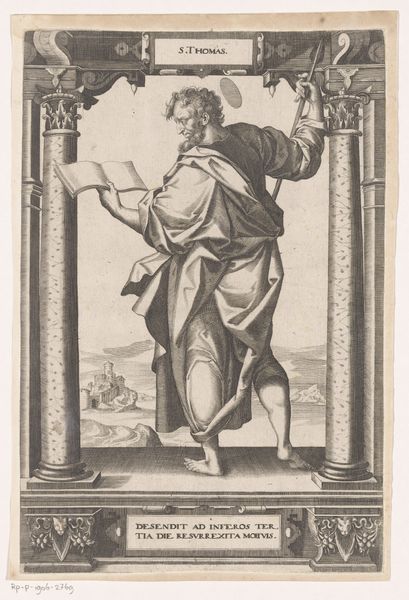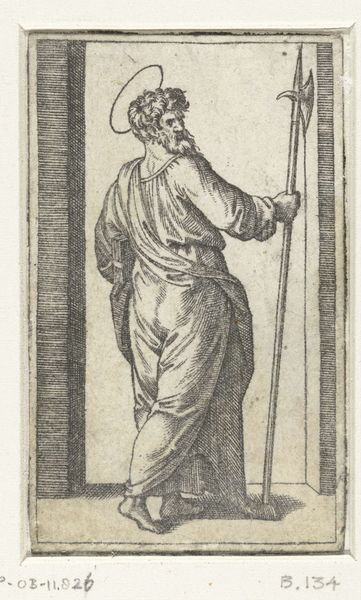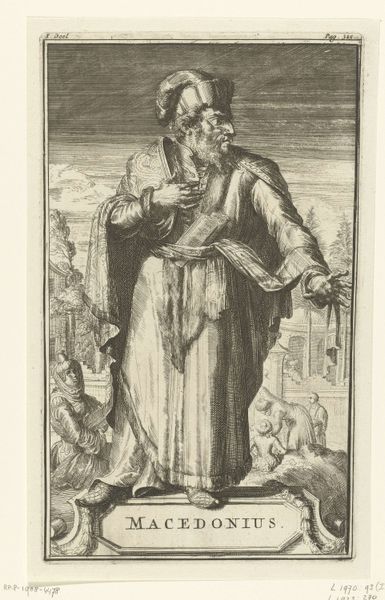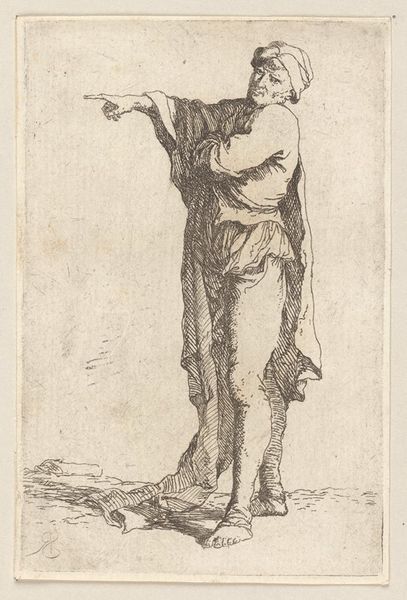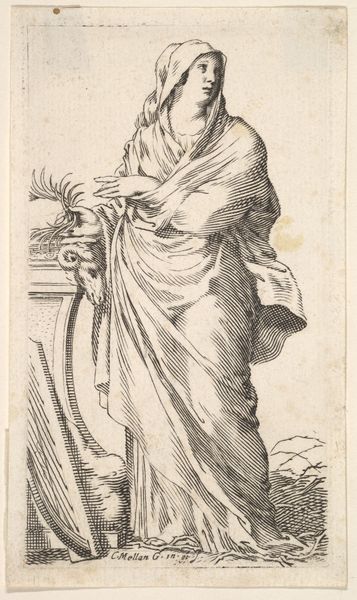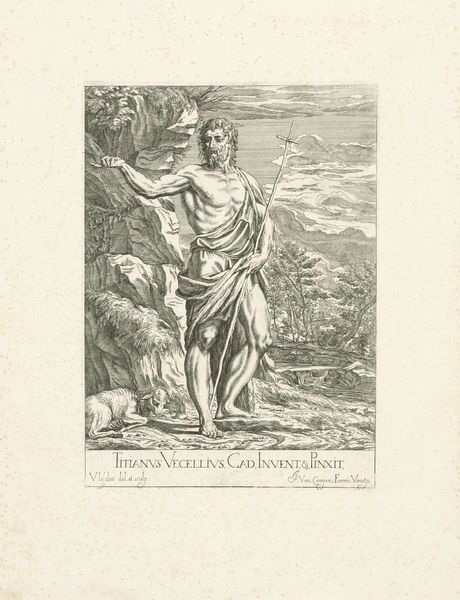
drawing, etching, ink, engraving
#
drawing
#
pen sketch
#
etching
#
old engraving style
#
figuration
#
ink
#
romanticism
#
line
#
history-painting
#
engraving
#
christ
Dimensions: height 58 mm, width 48 mm
Copyright: Rijks Museum: Open Domain
Ernst Willem Jan Bagelaar created this small print, "De ziel wijst naar de sterrenhemel," using etching, a printmaking technique that democratized image production in the 18th and 19th centuries. To create an etching, the artist covers a metal plate with a waxy, acid-resistant ground. They then draw an image with a sharp needle, exposing the metal. When the plate is immersed in acid, the drawn lines are etched into the surface. This process results in the fine, delicate lines and subtle tonal variations we see here. Etching allowed for relatively easy reproduction, making art accessible to a wider audience beyond the elite. The labor-intensive aspect lies in the skilled handwork of preparing the plate and executing the drawing, embodying a blend of craft and early industrial methods. These prints circulated widely, spreading ideas and aesthetics far beyond the artist’s immediate circle. Considering its materiality and production helps us to appreciate this image as more than just a devotional scene. It also reflects the changing dynamics of art, labor, and consumption in Bagelaar's time.
Comments
No comments
Be the first to comment and join the conversation on the ultimate creative platform.


